Speeding suburbanization south of Charlotte – what’s a planner to do?
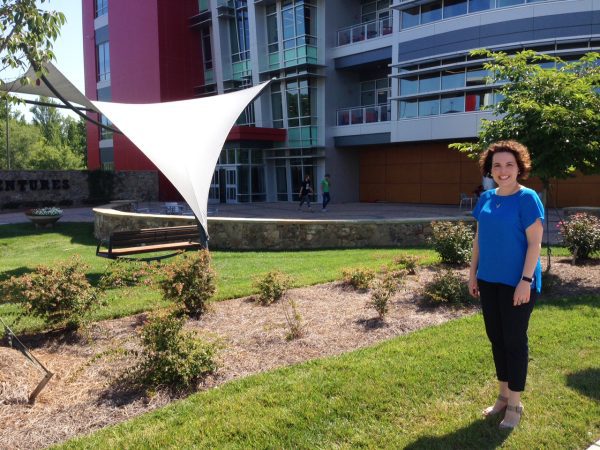
Although Charlotte is rapidly growing, the area just south of the city is growing even faster. From 2000 to 2014, Charlotte’s population grew 43 percent while that of unincorporated Indian Land more than tripled.
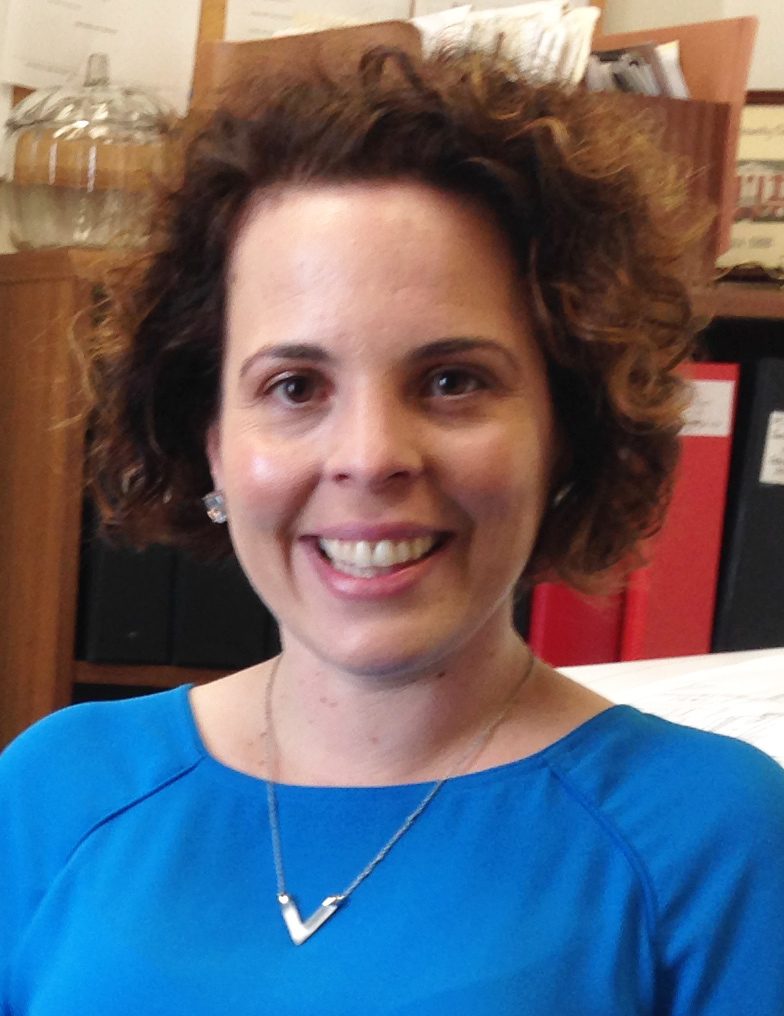
Lancaster County Planning Director Penelope G. Karagounis. Photo: Mary Newsom
Indian Land is in the Lancaster County, S.C., panhandle – a vertical sliver of land slicing south from Charlotte’s Ballantyne neighborhood and wedged between York County’s fast-growing Fort Mill, S.C., to the west and the rapidly suburbanizing Union County, N.C., communities of Marvin, Weddington and Waxhaw to the east. Yet south of the panhandle much of Lancaster County remains rural.
Indian Land’s growth launched with the building in the mid-2000s of the Sun City Carolina Lakes retirement community off U.S. 521 about 5 miles south of the N.C.-S.C. line. Today Indian Land is also home to Red Ventures, a sales and marketing firm with 3,000 employees. (Interestingly, the Red Ventures online jobs listings refer to Indian Land jobs as in “south Charlotte.”)
PlanCharlotte’s Mary Newsom recently talked with Lancaster County Planning Director Penelope G. Karagounis, who grew up in Charlotte and graduated from UNC Charlotte, about planning in Lancaster County. Like many local governments, the county is updating its zoning ordinances, a Unified Development Ordinance, a project begun early in 2015 that is about to wrap up.
Listen to the podcast here, or scroll down to read their conversation, edited for brevity and clarity:
Q. Indian Land has been right in the bullseye of growth.
A. It has. Ever since I-485 was built and Johnston Road connected to Indian Land, that opened Pandora’s Box of development. Geographically speaking we’re in South Carolina, but it’s really the whole region is growing. People are moving from all over the country to the Carolinas. A lot of times the reason for the spillover growth is for lower taxes. And also for the quality of life. There are parts of Indian Land that are still rural.
Q. When you took the job, did you know this kind of growth was headed your way?
A. I was aware of that when I became the planning director in 2012. I’ve been working in Lancaster County from 2004. The Carolina Lakes Sun City retirement community fueled the growth for Indian Land.
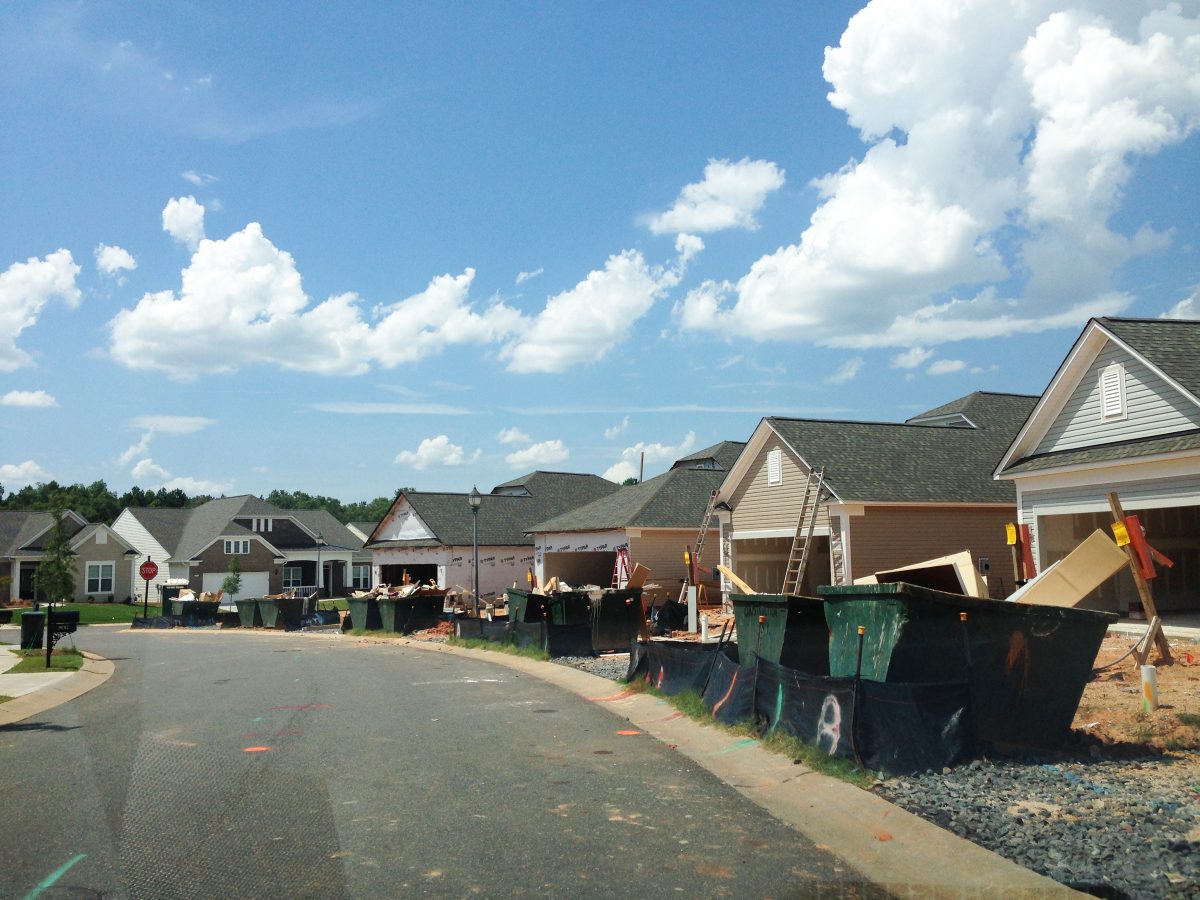
Development continues at the decade-old retirement community, Sun City Carolina Lakes, in Indian Land, S.C. Photo: Mary Newsom
Q. You grew up in Charlotte and you watched fast growth in south Charlotte. As I was driving today to meet you in Indian Land, I saw strip development after strip development. It was as though I was driving down Albemarle Road in the 1990s. What can you do to keep Indian Land from replicating Charlotte’s mistakes?
A. One of the dilemmas we have is that when you cross the state line, we have different regulations. The reason you see so much strip development is that a lot of the property on Highway 521 is our General Commercial District zoning. Our current Unified Development Ordinance allows for strip centers like that. After I became planning director, we designed a Highway Corridor Overlay District, and we’re trying to create better aesthetics for the buildings along 521. But all the strip centers are allowable uses.
Q. We passed what may be the largest Walmart parking lot I’ve ever seen. Can you talk a little about how that Walmart came to be?
A. Around 2005, Walmart wanted to locate in the southern part of the Charlotte area. But south Charlotte, Marvin and Waxhaw would not allow it. Walmart found this parcel – the first parcel you come to in Lancaster County. It was zoned General Commercial District, and it was a use by right. The Planning Department didn’t really have any authority, because the property was zoned for General Commercial District, which allows intense commercial uses. Our hands were tied.
Now that we have the Highway Corridor Overlay District, for new commercial projects we can force parking lots to be hidden, with more landscaping, better signage. We have better aesthetic regulation.
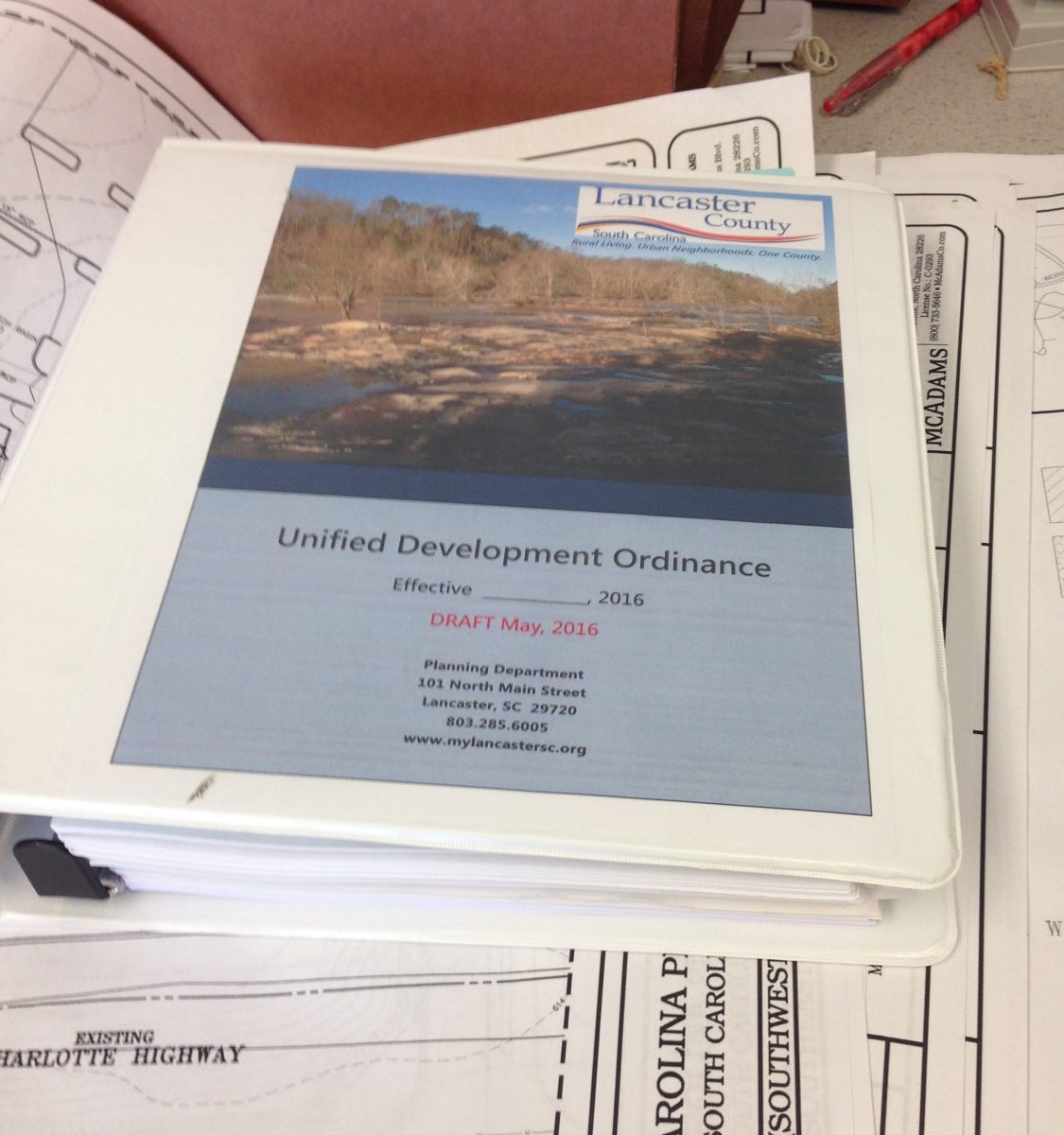
The draft of the new Unified Development Ordinance. Photo: Mary Newsom
Q. Indian Land has a mix of suburbanized strip development, large new subdivisions and some really rural farmland. The southern part of the county is very rural. How do you manage these different cultural expectations?
A. It’s very challenging. Lancaster County is polarized. You have the urbanized area to the north and the southern part is very rural. I have to create regulations for both portions of the county. That has been controversial over the years. People who live in Indian Land would like to see more restrictive, urbanized regulations, but that’s difficult to pass when it goes to County Council.
For instance, when I started in 2004 we were trying our best, with text amendments, to increase our buffer standards. We would go to the planning commission and they would make a recommendation to approve. When we went to County Council, we had citizens from the southern part of the county who did not want to have the strict buffers, and those text amendments would not get passed. Fast-forward to 2012 and even today: That Highway Corridor Overlay that specifies that north of Highway 75 to the state line we want to have more buffer standards.
We’re also working on a major, Unified Development Ordinance rewrite. This county did not get zoning until 1998, and they were rushed to get zoning…
Q. Back up. Why were they rushed to have zoning in 1998?
A. I believe there was a South Carolina state law that they needed to have zoning for the entire county. If you think about it, in Lancaster County they’re newbies in zoning and land regulations.
Q. Have you revised your comprehensive plan in recent years?
A. Yes. That was adopted in December 2014. That opened the door and the conversation among County Council members. There’s a future land use map associated with the comprehensive plan, and they saw what they needed to change.
For some of the parts of the comprehensive plan – what people wanted to see for Lancaster County – we didn’t really have the correct zoning districts. That opened the door to get funding for a major Unified Development Ordinance rewrite. That started in January of 2015, and we’re about to wrap that up.
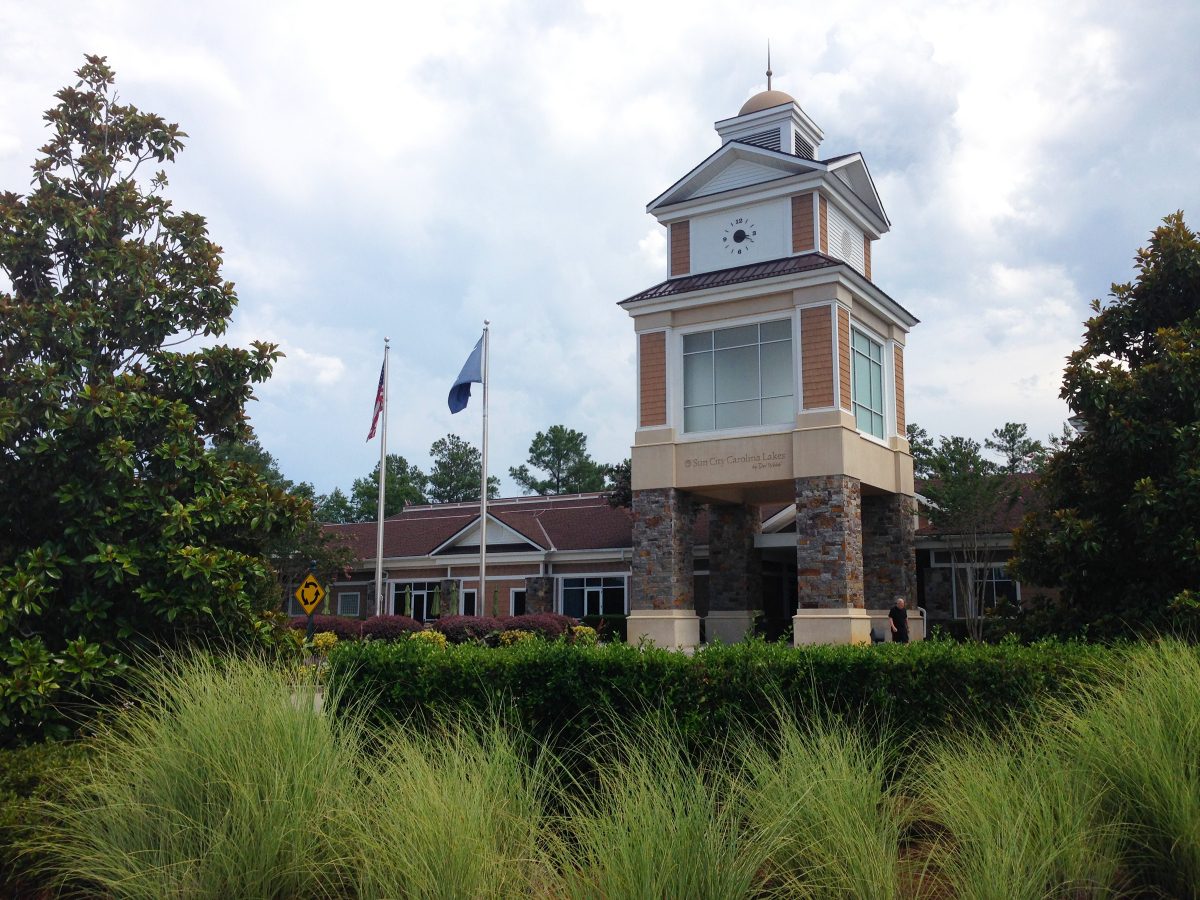
Clock tower at Sun City Caroline Lakes. Photo: Mary Newsom
Q. What are some of the most notable changes you think will end up in the new Unified Development Ordinance?
A. One is flexibility of zoning districts. Under current zoning we just have planned development districts that basically write their own rules. That has been a nightmare for planners. What we’re creating are mixed-use districts that will be true mixed-use development.
An issue we’ve had over the years is with the commercial district. A lot of the uses were by-right [meaning no rezoning or public hearings needed]. South Carolina does not allow conditional zoning. With this new ordinance, we have proposed setting conditions they have to meet for a particular use. And they have to go through the planning commission, where we will have a public hearing for residents to voice concerns about the use, then the planning commission will make a recommendation. When it goes to County Council, it’s not a rezoning but it’s an opportunity for a second public hearing. The County Council would be the governing authority to grant the zoning permit, instead of them going to the zoning administrator. That is a difference.
Another significant difference is this. When we did the comprehensive plan, a lot of people who live in rural areas – they love where they live, but the younger generation wants some economic opportunities. We’ve created a Rural Business Zoning District zoning. We have so many rural crossroads. I’m a native Charlottean, but a lot of long-time residents of Lancaster County were telling me about some of these places that I didn’t even know existed – where there’s an old gas station, some type of commercial building. They were never zoned properly. People who live in those rural areas, their No. 1 complaint is they have to drive either to Lancaster or Indian Land or Charlotte. This Rural Business Zoning District will create some commercial opportunities in the rural areas.
Q. In Indian Land, some residents have tried to get enough signatures to have an incorporation vote. Where does that stand?
A. They have not received the amount of signatures the state mandates in order for it to be on a referendum.
Q. What’s the approximate population of the area considered Indian Land?
A. Basically Indian Land is north of Highway 75. It’s approximately 22,000 people.
Q. That would be the biggest municipality in the county, by far.
A. Oh yes.
Q. One big expense for governments in a fast growing area is transportation. Could Lancaster County enact its own transportation tax? Could you pass a “Pennies for Progress”-type sales tax if you wanted to?
A. We have an issue with roads. A lot of the roads in Lancaster County are state roads. A lot of our roads are not good quality roads. We did pass a Capital Project Sales Tax for repaving roads.
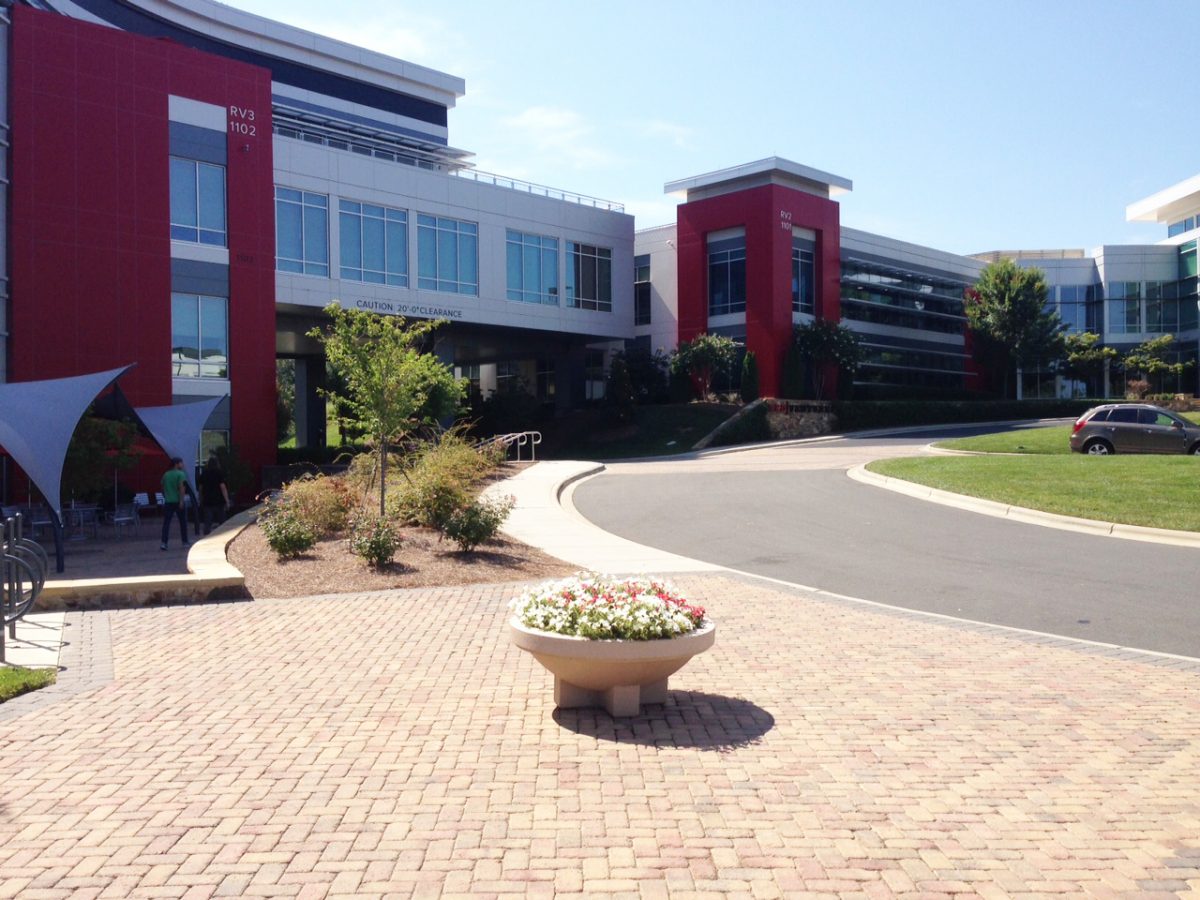
The huge Red Ventures campus just south of the N.C.-S.C. line boasts a gym, basketball court, bowling alley and two on-site cafes, among other amenities. Photo: Mary Newsom
Q. You mentioned new policies for subdivision streets: The homeowner associations will have to maintain streets.
A. The current County Council adopted an ordinance of not taking over maintenance for subdivision streets. They have to be constructed as a public street with county standards, but they will be privately maintained. In the next 10 years or so, we’ll probably have some complaints to County Council, asking why my HOA has to pay for the roads when I’m a citizen and I’m paying taxes.
Q. Development in the area is a very suburban model: cul-de-sac subdivisions with one entrance. That’s been one of Charlotte’s problems. This suburban form doesn’t perform well when you get too many people trying to drive, wanting a transit system, etc. Again, can you keep Lancaster County from replicating mistakes Charlotte made?
A. It’s difficult. You have to educate people about the need for connectivity – developers as well as citizens. We grew up in a society of cul-de-sacs, and people think, “Oh this is suburban America, you know, we want safety, by not having cut-through traffic.” We will have a connectivity index ratio in our Unified Development Ordinance, so you need to provide connectivity or stub-outs to residential and commercial properties.
Q. If you had a magic wand and could make any planning change for Lancaster County, irrespective of political sensibilities, what would you do?
A. First, you know the rural communities like Kershaw and Heath Springs, even the city of Lancaster, there’s infrastructure there, the old buildings with the beautiful architecture, so I would love to draw some economic opportunities to those areas. Lancaster County has the Catawba River, a beautiful asset, and we could provide more recreational opportunities and create destinations: more parks, trails and recreation activities at the river, because we have such a gem there.
A second thing, using my magic wand for Indian Land, is some way to provide different modes of transportation: Have bike lanes, have sidewalks, have more trails – different options for people. Have bus service. And who knows? Could we have light rail in the future, from Ballantyne straight to Indian Land? That would be awesome.